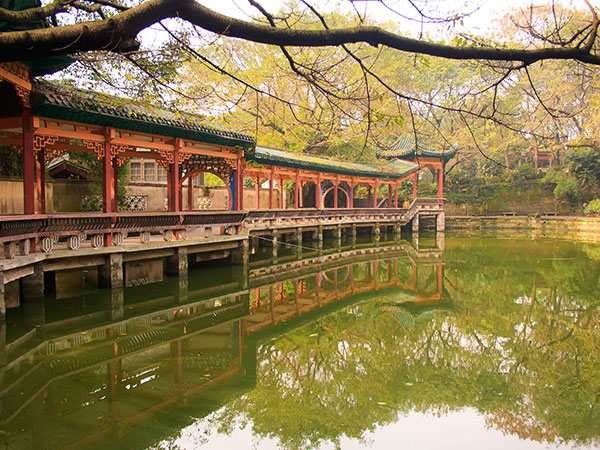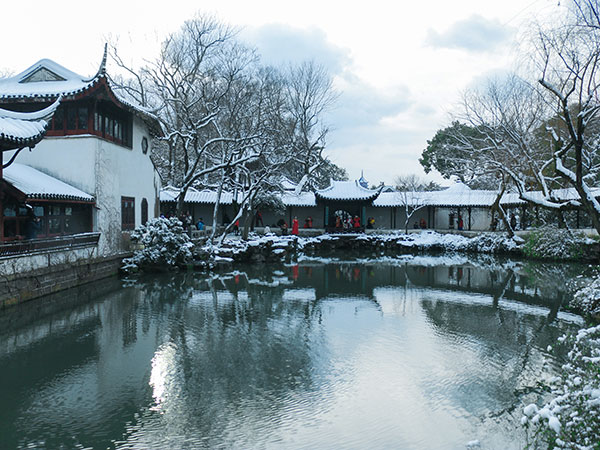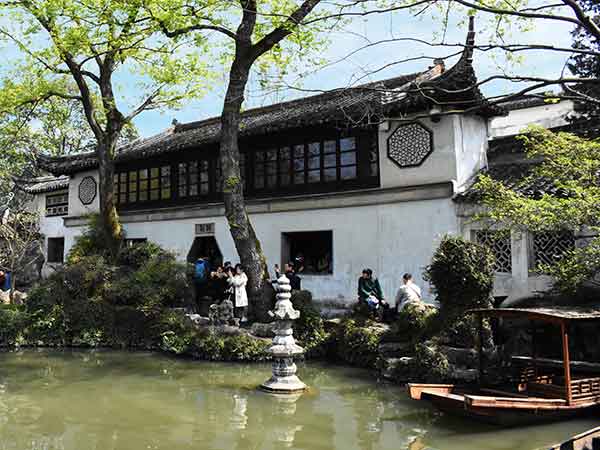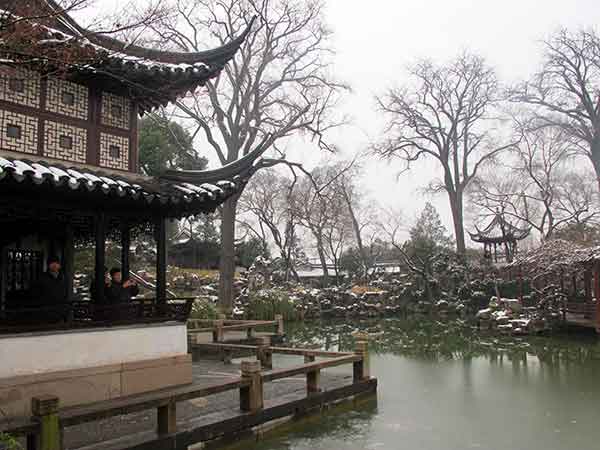Lingering Garden is located in at 338 Liuyuan Rd. Suzhou, Jiangsu province, China. Lingering Garden is one of the great four gardens in China, together with the Summer Palace in Beijing, the Mountain Summer Resort in Chengde, and the Humble Administrator’s Garden in Suzhou.

Covering an area of 23,300 square meters, Lingering Garden is also the large classical private garden in China. It was built in the Qing Dynasty style. The garden is known for exquisite architectural art. It boasts its fine gardening, luxurious and spacious hall, and collection of stones from Taihu Lake by which people can be freshened up without going out the city; design of courtyards is full of changes and surprise. Its architectural spatial processing skills are quite impressive. Gardeners make use of various artistic techniques, constituting a rhythmic garden space system. It is a world-famous example of architectural space artistic processing. Now the garden is divided into four parts: East, Central, West, and North. And every part shows unique features of the garden. Lingering Garden has become a main attraction for visitors to get to know more about classic architectures of ancient China.
History
Lingering Garden was first built in 1593 during the Wanli reign of Ming Dynasty by Xu Taishi, a bureaucrat of the Ming court, as his private residence. The garden was originally called East Garden, and the middle pond and overlapped yellow stone rockeries on the west of the pond are built at that time. After his death, Liu Su became the owner of the garden. By rebuilding it, Liu plated many bamboos and had many stones inscribed out of his hobby. After being expanded and renovated, it was renamed “Hanbi Villa”, which was popularly known as “Liu Garden”. In 1873, it was purchased by the Shengs, who renamed it as “Lingering Garden”. As “lingering” has the same pronunciation with ‘Liu’ in Chinese, the surname of the former owner. The garden was inherited by Sheng Xuanhuai from his father, he abandoned the garden in 1911 and it fell into disrepair.
After establishment of the People’s Republic of China, Suzhou government took over and renovated the garden. It was reopened to the public in 1954. In 1997, the garden was added to the UNESCO Word Heritage list, together with Humble Administers Garden, Master of Nets Garden and Huan Xiu Mountain Villa. Since then, it remains a major tourist destination in Suzhou.
Design Features
The garden is separated into the East, Central, West, and North four themed parts. The ancestral temple and the house lie to the south of the garden.
The Central part is the oldest part of the garden. It features a man-made mountain and lakeside scenes, resembling a long scroll of traditional Chinese painting. It is centered upon a lake with man-made mountain in the north-west and a number of attractive buildings in the southwest, such as the Green Shade Pavilion, the Pellucid Tower, the Zigzag Stream Tower, the Hao Pu Pavilion, the Hanbi Moutain Villa, and the Refreshing Breeze Pavilion by the lake. The mountains made mainly of yellow stones and earth.
The eastern part is noted for its joyous groupings of gardens and elegant buildings. A winding roofed walkway behind the small entrance of the garden, while leading to the places of quietude, shows the masterly use of contrast between big and small, straight and zigzag, and light and shade.
The western part sets a fine example of good-looking earthen hills studded with yellowstones and covered with maple trees. There is a winding brook lined with peach trees and weeping willows.
And the northern part, cottages with bamboo fences and idyllic scenes.
How to Get to Lingering Garden
It can be reached by Public Bus 7, 33, 4, 70, 85, 88, 91, 933, 101, 103, 317, etc.



